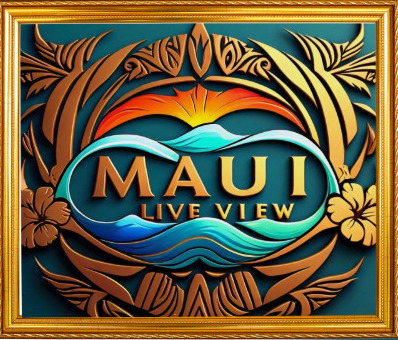Wailea Golf Club, Maui Webcams
Paradise Planned: The Rise of Wailea, Maui’s Luxurious Resort Destination
Wailea Golf Club, Maui Webcams. Nestled along the sun-drenched southwestern coast of Maui, Wailea stands as a testament to careful planning and visionary development. This 1,500-acre master-planned resort community has transformed from a rugged, arid landscape into one of Hawaii’s most prestigious destinations. The story of Wailea is one of ambitious dreams, cultural preservation, and the delicate balance between luxury tourism and environmental stewardship.
Long before the first hotel broke ground, the area now known as Wailea was part of the ahupuaʻa (traditional land division) of Paeahu. Native Hawaiians lived and worked on this land for centuries, fishing in the bountiful waters and cultivating crops where possible in the relatively dry climate. The name “Wailea” itself means “Waters of Lea,” referring to the goddess of canoe-makers.
The modern history of Wailea began in the 1960s when Alexander & Baldwin, one of Hawaii’s “Big Five” companies, saw potential in the undeveloped coastline. The company had acquired vast tracts of land in South Maui, including what would become Wailea, through its sugar plantation operations. As Hawaii’s economy shifted from agriculture to tourism, A&B recognized an opportunity to create a new type of resort destination.
In 1970, the Wailea Development Company was formed as a subsidiary of A&B to oversee the ambitious project. The master plan, crafted by architect and planner Asa Hanamoto, envisioned a carefully integrated community of hotels, residential areas, golf courses, and other amenities. Unlike the more haphazard development seen in some other Hawaiian resort areas, Wailea was designed from the ground up with a cohesive aesthetic and respect for the natural environment.
Construction began in the early 1970s, with infrastructure improvements paving the way for the first major projects. The Wailea Golf Club’s Blue Course, designed by Arthur Jack Snyder, opened in 1972, marking the beginning of Wailea’s reputation as a golf destination. The first hotel, the Wailea Beach Hotel (now the Wailea Beach Resort – Marriott), welcomed guests in 1976, offering a taste of the luxury that would come to define the area.
Throughout the 1980s and 1990s, development in Wailea continued at a steady pace. High-end hotels like the Four Seasons Resort Maui at Wailea (1990) and the Grand Wailea (1991) set new standards for luxury in Hawaii. These resorts, with their lavish amenities and impeccable service, helped establish Wailea as a playground for the wealthy and famous.
Alongside the hotels, residential communities began to take shape. Exclusive condominium complexes and private homes offered residents and part-time visitors the chance to own a piece of paradise. The Shops at Wailea, opened in 2000, brought high-end retail and dining options to the area, further enhancing its appeal as a self-contained luxury destination.
Throughout its development, Wailea’s planners and developers have attempted to balance growth with environmental and cultural considerations. The Wailea Community Association, established in 1974, has played a crucial role in maintaining the area’s aesthetic standards and preserving open spaces. Strict design guidelines ensure that buildings blend harmoniously with the landscape, and significant portions of the coastline have been kept undeveloped for public beach access.
Efforts have also been made to honor the area’s rich Hawaiian heritage. The Wailea Beach Path, a 1.5-mile coastal walkway, features interpretive signs that share the history and legends of the region. Several ancient Hawaiian sites within Wailea have been preserved, including heiau (temples) and fishing shrines.
However, the development of Wailea has not been without controversy. Like many luxury resort areas in Hawaii, it has faced criticism for catering primarily to wealthy visitors while potentially pricing out local residents. The transformation of the coastline has also raised concerns about the impact on natural habitats and traditional cultural practices.
In recent years, Wailea has continued to evolve. Sustainability has become a greater focus, with resorts implementing water conservation measures, energy-efficient systems, and programs to protect local marine life. The community has also expanded its offerings beyond just luxury tourism, hosting cultural events, farmers markets, and wellness retreats that appeal to a broader range of visitors and residents.
As of 2024, Wailea remains one of Hawaii’s premier resort destinations, boasting five crescent-shaped beaches, world-class golf courses, and some of the most luxurious accommodations in the state. Its carefully maintained landscape of swaying palms, vibrant tropical flowers, and immaculate lawns continues to captivate visitors from around the world.
Looking to the future, Wailea faces both opportunities and challenges. The ongoing global focus on sustainable tourism presents a chance for the community to become a leader in eco-friendly resort practices. However, issues such as climate change, rising sea levels, and the need to diversify Hawaii’s economy beyond tourism will require thoughtful solutions.
The history of Wailea is a microcosm of broader trends in Hawaii’s development over the past half-century. It reflects the islands’ transition from an agricultural economy to one dominated by tourism, the challenges of balancing development with cultural and environmental preservation, and the ongoing debate about the future of Hawaii’s communities.
From its origins as a bold vision for an undeveloped coastline to its current status as a world-renowned luxury destination, Wailea has come to embody both the allure and the complexities of paradise. As it moves forward, the community’s ability to adapt to changing times while honoring its past will be key to ensuring that the Waters of Lea continue to welcome and inspire for generations to come.
For more information, visit the official Wailea Golf Club website. Paia Bay Beach, Maui Webcams
